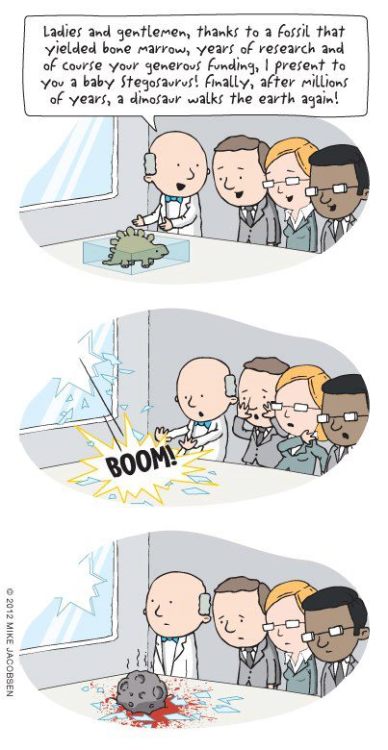Looking east to the head and source of the Big Obsidian Flow, on the south side of Newberry Volcano. I posted
a panorama of this whole vista three weeks ago, but today I want to focus on something that never quite looked right to me, and offer a couple possible explanations. In the following annotated version of the above photo, I've highlighted the rim on the uphill side of the dome and flow. I've also marked the location of China Hat, an apparent cinder cone that nevertheless has a very distinctive look.
So what's wrong here? It's something that nagged at me for years. I had only seen pictures until seven or eight years ago when my Sister and her family visited, and I finally made the trip up the steep, twisty, and wash-boardy road up to this peak, and even first-hand, I couldn't quite put my finger on what was bugging me. Likewise visiting with Dana two years ago. It was only by looking over photos from that last visit that I spotted the feature that was making my mind itchy.
This sense of "something looks wrong" here, or at least "something doesn't look quite right," is not one to be discounted, even by people who haven't spent their lives learning about geology. All of us have spent our lives looking at the earth's surface- most of us, at its solid surface: its landscapes. We have an intuitive sense of what does and doesn't look right. And when something in our heads starts complaining that the landscape doesn't make sense, we need to pay attention.
In this case, the thing that was bugging me was the the uphill edge of the flow is, well,
uphill. Liquids ain't s'posed to flow uphill. Once I figured out that was the thing which was pestering me, a couple of possible explanations occurred to me almost immediately.
First, I think it's reasonable to assume that the rubbley knob or dome is (or was) centered over the vent where the obsidian was erupted. Obsidian is very viscous as lavas go, and I suspect if we were able to get at it and handle it in its "molten" state, we wouldn't perceive it as liquid at all. So the rate at which it would squeeze out of the vent might easily overwhelm the rate at which it was flowing away from the vent. This would create an enormous mound over the vent that only slowly over weeks or even months would flow away down hill. Picture the dome above as much higher, perhaps up near the caldera rim, and suddenly the raised ramparts on the uphill edge of the flow aren't as puzzling.
Now, I did say a couple of possible explanations, but really they're variations on a theme, and could very well be operating together. How did this supposed mound of hot obsidian finally spread out and subside? If the venting was short-lived and terminated quickly, that dome may very well have migrated down slope as the flow advanced- slumping, in a sense. On the other hand, if the venting continued as the conjectured mound slowly moved toward the interior of the caldera, the dome might have remained more or less in place as the overall mound collapsed around it- and indeed in other photos, that central dome does seem to have a downhill "tail."
The important issue here, though, is not "here's the answer." It's "trust your geological intuition when it says something's wrong, because that will likely lead to new insight and understanding." I may very well be wrong in my tentative conclusions, but I finally understand why this flow has always pestered some part of my mind.
Photo unmodified. August 21, 2011.
FlashEarth location.












































